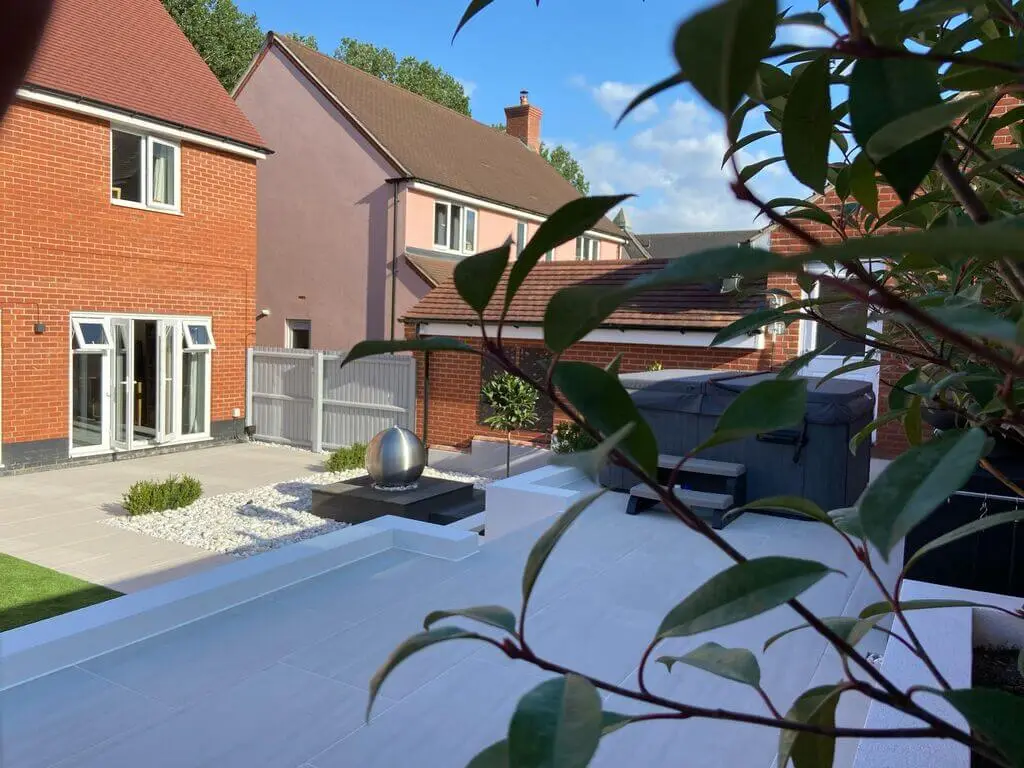The demand for rooftop gardening is growing, especially in cities where space is limited. A rooftop garden is simply a garden constructed on the roof of a building. It gives one the opportunity to embrace greenery and fresh air, or even grow some vegetables if desired, without having to buy land elsewhere.
A rooftop garden must be conceptualized with a methodical approach, along with plenty of creativity and the right choice of materials. In this article, you will be guided through the step-by-step design of rooftop gardens, the considerations involved, and how to make them both beautiful and practical.

What is a Rooftop Garden?
Artificial green space created on the roof of a building is termed a rooftop garden. It can be as simple as pots filled with flowers or as elaborate as a stitched lawn complete with seating arrangements and water features.
Rooftop gardens, apart from having their own visual appeal, do serve some useful purposes like heat reduction, improving air quality, and providing a calm area to unwind.
Advantages of a Rooftop Garden
Let’s first take a look at why rooftop gardens are worth their while:
- Space-Saving Idea – Necessary in cities where land is scarce!
- Retains Coolness – Green roofs keep buildings cool during the summertime.
- Alters the Air Composition – Plants take in carbon dioxide but release oxygen.
- Increases Market Value of Property – A good rooftop design will boost property prices.
- Provides Food – You can grow vegetables, herbs, and fruits.
- For Relaxation – Provides a soothing place for family and friends.
Step-by-Step Guide to Designing a Rooftop Garden
Step 1: Check Roof Strength and Safety
Before lifting a finger, determine whether your roof has sufficient strength to take on the extra load. Contact an engineer if need be. Waterproofing and drainage should also be thoroughly done to avoid leakage.
Step 2: Layout Planning
Decide how you actually want to use the rooftop. Some options may include one of the following:
- A lounge for just kicking back, with zen-like seating arrangements?
- A vegetable or a herb garden?
- A green space full of flowers?
- A little bit of everything?
Start drawing a simple plan, marking the zones for plants, seating, and pathways.
Step 3: Choose Plants
Plants that thrive in rooftop environments that include harsh winds, heat, and direct rays of the sun are perfect for:
- Succulents and Cacti
- Small Shrubs
- Herbs like Mint, Basil, and Coriander
- Vegetables ranging from Tomatoes, Peppers, and Spinach
- Seasonal Flowers for Color
Step 4: Choose Boxes and Planters
You could use pots, raised beds, or vertical planters. It is best to choose lightweight containers on rooftops so as not to add weight.
Step 5: Adding Soil and Irrigation
Use lightweight soil mixes rather than heavy garden soil. Get a drip irrigation system installed or use self-watering planters to make watering easy.
Step 6: Seating and Decoration
The rooftop garden should be comfortable. Put in some chairs or benches, maybe even a small table. Use wooden decking, gravel paths, or tiles to make the space attractive.

Step 7: Lighting and Shade
The outdoor lights will brighten up the rooftop for use at night. Shade structures such as pergolas, umbrellas, or bamboo screens offer protection from the sun and wind.
Design Ideas for Rooftop Garden
Small Rooftop Garden
Use vertical planters and hanging pots of small-scale furniture to fit into limited spaces.
Green Roof Style
Give natural touches by covering large roof sections with grass or ground-cover plants.
Urban Vegetable Garden
Grow vegetables in raised beds or big containers. Set up compost bins for making natural fertilizer.
Relaxation Zone
Seating, shade, and plants—all to relax during reading or with the family.
Challenges of Designing a Rooftop Garden
While aesthetically pleasing, the rooftop garden poses some challenges:
- Additional weight on the roof
- Water leakage problems if not waterproofed
- Exposure to strong winds and heat
- Regular maintenance-preventive care
If one plans accordingly and chooses the right materials, these become problems that can be handled.
FAQs
Do rooftop gardens damage the building?
No, not if done properly. Waterproofing, drainage, and professional design make rooftop gardens totally safe.
What are the best plants for rooftop gardens?
A few hardy plants might include succulents, herbs, and small shrubs. You can also plant vegetables or some seasonal flowering plants.
Do rooftop gardens bring down the electric bills?
Yes. Green roofs tend to keep buildings cooler during summer months; hence, the need for air conditioning comes down.
Are maintenance requirements high for rooftop gardens?
Lawn gardens require watering, trimming, replacing seasonal plants, etc., regularly. One could make maintenance less cumbersome by installing drip irrigation.
Conclusion
Rooftop gardens are a great way to convert the roof of an unused structure into a green, useful space. For a much functional and aesthetic rooftop garden, first, check the strength of the roof, then plan a general layout, select appropriate plants, and finish with seating arrangements and lighting.
Rooftop gardens are just the smart and environmentally friendly way to either grow food, chill out, or look at greenery in the city. If all goes well, you are going to be rewarded with a lifetime of happiness and comfort.
